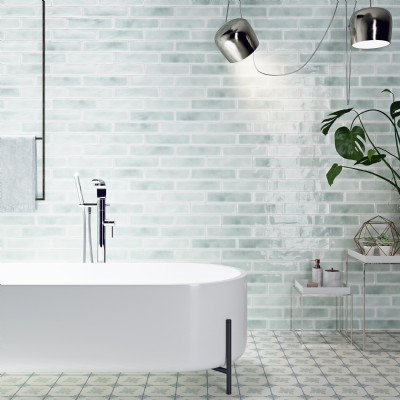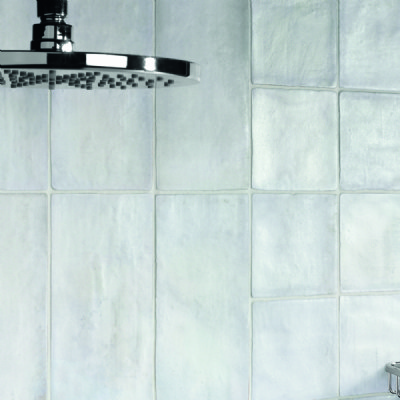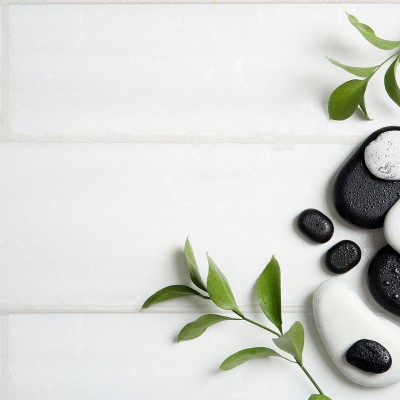Welcome to our comprehensive guide on selecting finishes for kitchens and bathrooms. In this article, we will explore the differences between ceramic and natural stone finishes, discuss their pros and cons, and provide practical advice on choosing the best finish for your home.
These stone surfaces can be used throughout the home in different ways. While we most often relate natural stone to countertops and ceramic to tile backsplashes, both materials can be used for projects including flooring, backsplashes, shower walls, and fireplace surrounds.
Before we delve into the differences between ceramic and natural stone, let’s quickly recap some similarities between them:
- Both Natural Stone and Ceramic tiles come in a wide variety of colors, finishes, and styles.
- Both are lower maintenance than other surface coverings (Laminate, Vinyl, and other materials)
- Both ceramic and natural stone finishes have the potential for long-term use when properly cared for, ensuring that your kitchen or bathroom will look beautiful for years to come.
Understanding Ceramic Finishes
Ceramic finishes are a popular choice for kitchens and bathrooms due to their versatility and affordability. They are made from clay and other natural materials, which are then fired at high temperatures. Ceramic finishes come in various shapes, sizes, colors, and patterns, allowing for endless design possibilities.
One of our preferred Ceramic Vendors, Genrose Stone + Tile, has a large variety of options for ceramic.
| Pros | Cons |
|---|---|
| Luxurious look | Higher Cost |
| Durable, good for High Traffic Areas | Requires maintenance to prevent staining and etching |
| Uniquely Patterned + Textured | Porous stone may require even higher maintenance. |
Understanding Natural Stone Finishes
Natural stone finishes, such as granite, marble, and slate, add a touch of elegance and sophistication to any kitchen or bathroom. These finishes are created from natural stone extracted from quarries, providing a unique and authentic look. Natural stone finishes are known for their durability and timeless appeal.
Our recommended Natural Stone supplier is also Genrose Stone + Tile.
| Pros | Cons |
|---|---|
| Versatile: More colors, sizes, patterns and shapes. | More prone to chipping / cracking. |
| More affordable than stone. | Colder, harder feel when unheated. |
| Low Maintenance. | Lacks the natural variation of stone. |
Comparing Ceramic and Natural Stone Finishes
When it comes to durability, natural stone finishes often outshine ceramic finishes. Natural stone is harder and more resistant to scratches and chips. On the other hand, ceramic finishes are relatively easier to maintain and less prone to staining. Aesthetically, natural stone finishes exude a luxurious feel, while ceramic finishes offer a wide range of design options.
| Ceramic | Natural Stone |
|---|---|
| Affordable | Timeless and Elegant, but pricier |
| More Customizable Designs | Unique natural patterns and variations |
| Low Maintenance | Durable, good for high-traffic zones |
| Susceptible to Chipping | Porous and may require sealing |
| Cold & Hard to the touch | Retains investment value longer |
Factors to Consider When Choosing Finishes for Kitchens and Bathrooms
Style and Aesthetics: Consider the overall design theme and desired look of your kitchen or bathroom. Choose a finish that complements the existing elements and creates a cohesive atmosphere.
Functionality: Evaluate the level of traffic and use the space will receive. Select a finish that can withstand daily wear and tear without losing its appeal.
Maintenance: Determine the level of maintenance you are willing to invest. Natural stone requires regular sealing and special care, while ceramic finishes are generally low-maintenance.
Budget: Set a realistic budget and explore options within your price range. Remember to consider the long-term value and durability of the chosen finish.
Step-by-Step Guide to Selecting the Right Finish
Conclusion:
Choosing between ceramic and natural stone finishes for kitchens and bathrooms can be a challenging task. By considering factors such as style, functionality, maintenance, and budget, you can make an informed decision. Remember to follow the step-by-step guide to ensure the process is smooth and rewarding. Enjoy your newly finished kitchen or bathroom, knowing that you have selected the perfect finish for your space.



















